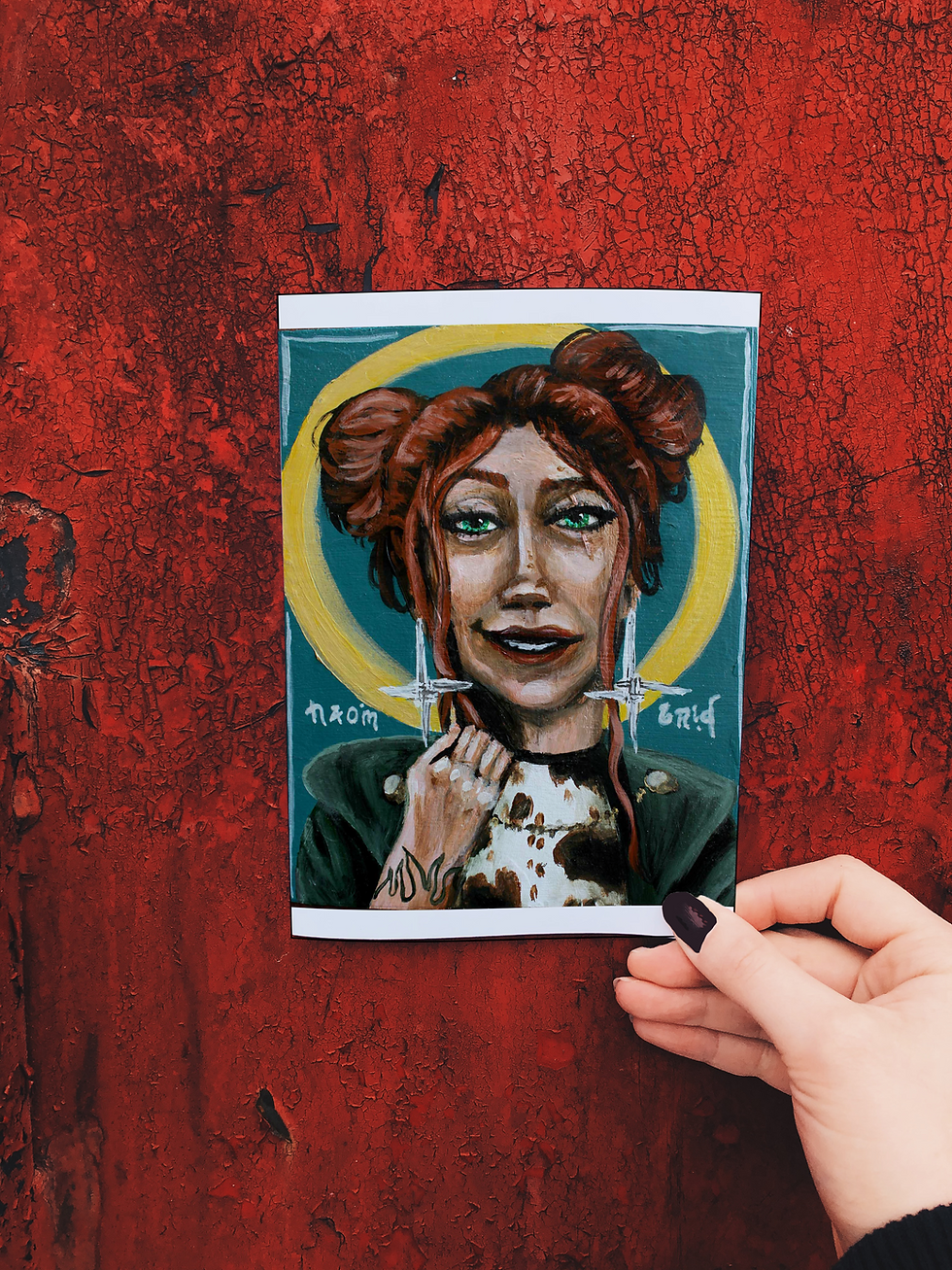

St. Brigid
Born: ~451
Died: ~525
FEast: Feb. 1st
Patron of:
blacksmiths, livestock, children of abusive parents, dairy, babies, poets, midwives, Ireland
Bio
Brigid’s historicity is often debated due to her strong connections to the Celtic Goddess Brigid in Irish legends. Some believe she was a Christianization of the goddess, while others believe she was a real person that took on many of the same attributes. Her legend (mostly derived from ancient hymns) is that she was born in Ireland to a Christian mother (who was baptized by St. Patrick) who was enslaved in the court of her father Dubhthach, the chieftain. Dubhthach’s wife forced him to sell Brigid and her mother to a druid, and Brigid became enslaved upon her birth as well. A story says that when the druid tried to feed her, she would vomit, and so instead a cow appeared whenever was needed to sustain her. It is said that even as a child, she was constantly giving away whatever she could. A legend says that she once gave away all of her mother’s butter, which miraculously replenished itself the next day.
When she turned 10, she was sent back to her father as a servant. He was so frustrated with her donating everything, though, that he tried to sell her to the King. While meeting with the king, she gave a man his sword so he could buy food for his family. The king recognized Brigid’s holiness and convinced her father to set her free.
When she was freed, Brigid returned to the druid to take over his dairy. She made the business prosperous despite her habit of charity, and was able to get her mother freed.
Her father tried to arrange marriages for her several times, but Brigid had no interest. She prayed that she would not be beautiful anymore so that she could instead join religious life, and the legend goes that she lost an eye until she entered a convent, upon which it was restored!
She founded a monastery in Kildare with other women who managed an eternal flame. As a founder of many more communities in her lifetime, she is known as the founder of Irish monastic life, and was said to be good friends with St. Patrick.
She also founded an art school focusing on metalwork and illumination, creating a “Book of Kildare” that was apparently so skilled and beautiful that many said it could only have been created by angels.
Brigid was said to have performed many miracles before her death. One was restoring the sight of a blind nun who realized she was more connected to her spirituality in the darkness, and so had Brigid take it away again. She also was said to have changed water into beer for a leper colony, to be able to control the weather, to have given two girls the ability to speak, to have blinded a man that mocked her, and to have caused fruit trees to grow more or dry up depending on the generosity of the owner. There is also a story about her asking the king for land on which to build her monastery. He laughed and told her she could have as much as her cloak covered. The cloth miraculously grew as her sisters held it out for her, until it covered enough land to build her convent. One last story is about Brigid’s favorite student who fell in love with a man and was going to sneak out from the bed they shared to meet him, but Brigid had put embers in her shoes. The next day when she confessed, Brigid healed her feet and her “heart”.
She passed away in 521, and this student, as Brigid predicted - though wishing to die with her - passed the next year on the anniversary of her death. St. Ninnidh gave Brigid her last rites, after which he encased his hand which had touched the saint in metal to preserve it.
wHAT wOULD they CARE ABOUT TODAY?
Art and Healing organizations and programs
Prayer
known for your miracles and sense of playfulness, show us all the tiny miracles in our own lives and the magic that can be found in even the most ordinary things. Remind us there is a holiness in being exactly who we are. Be with us as we build a better world by using our gifts. Amen.
Art Reflection
Brigid’s sense of humor is displayed in her expression - a bold, humorous smile. Her earrings are the St. Brigid’s cross (in metalwork, which she established a school for), and her cow print shirt is a symbol of the cow that came to feed her in her infancy, as well as her patronage of livestock. She also has a tattoo of flames to symbolize the eternal flame she and her first co-sisters attended to in the convent, and her green cape is representative of a miracle in which the cape grew endlessly when she asked for land for a convent and was given only as much as her cape could cover.




